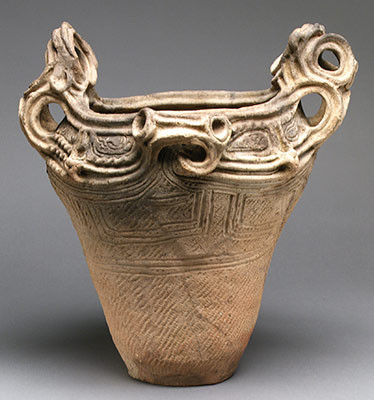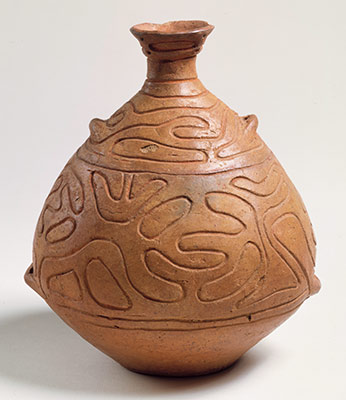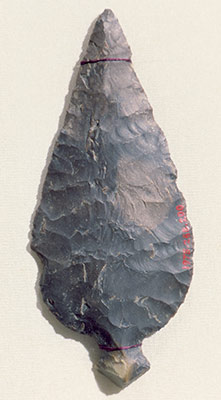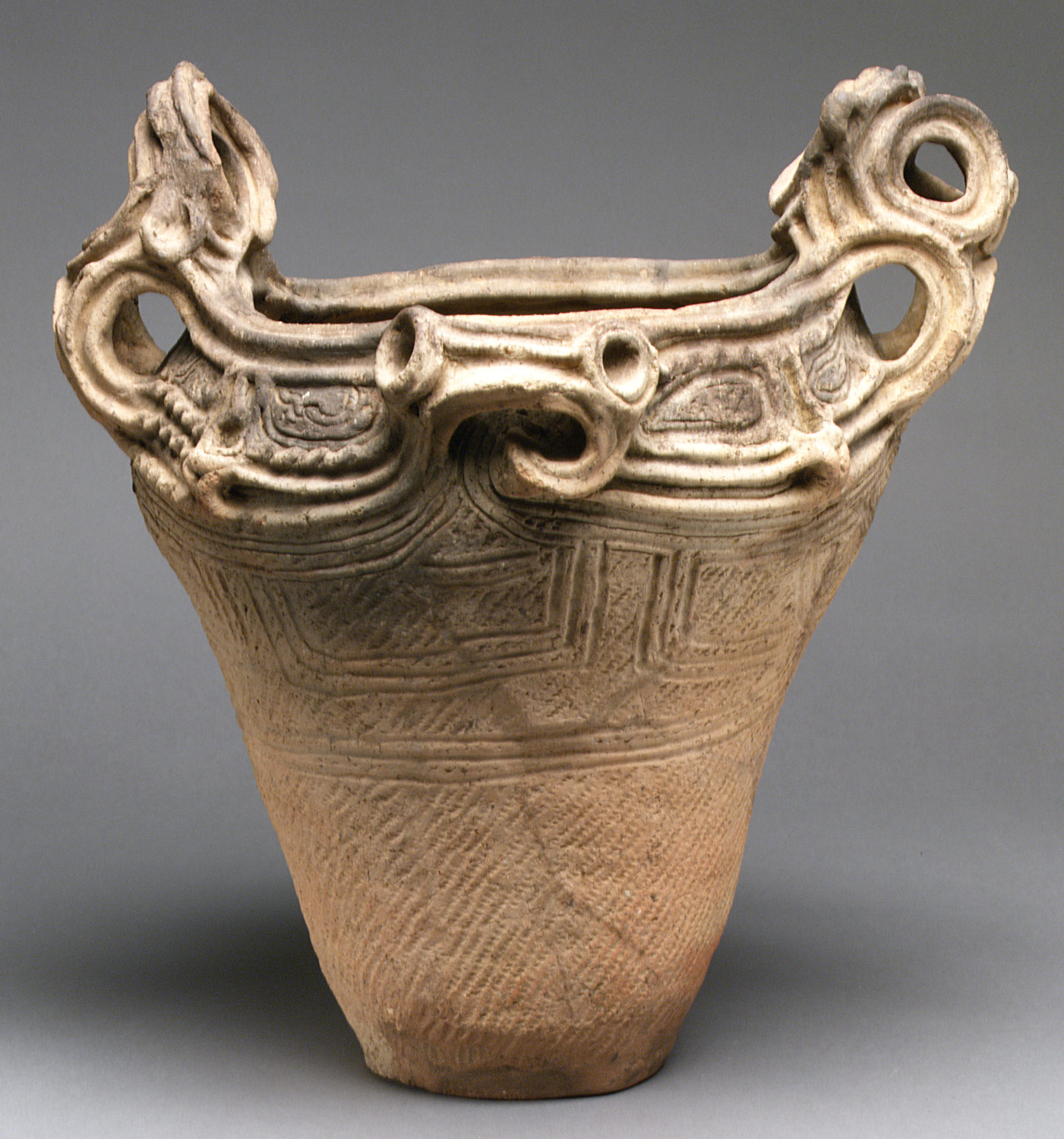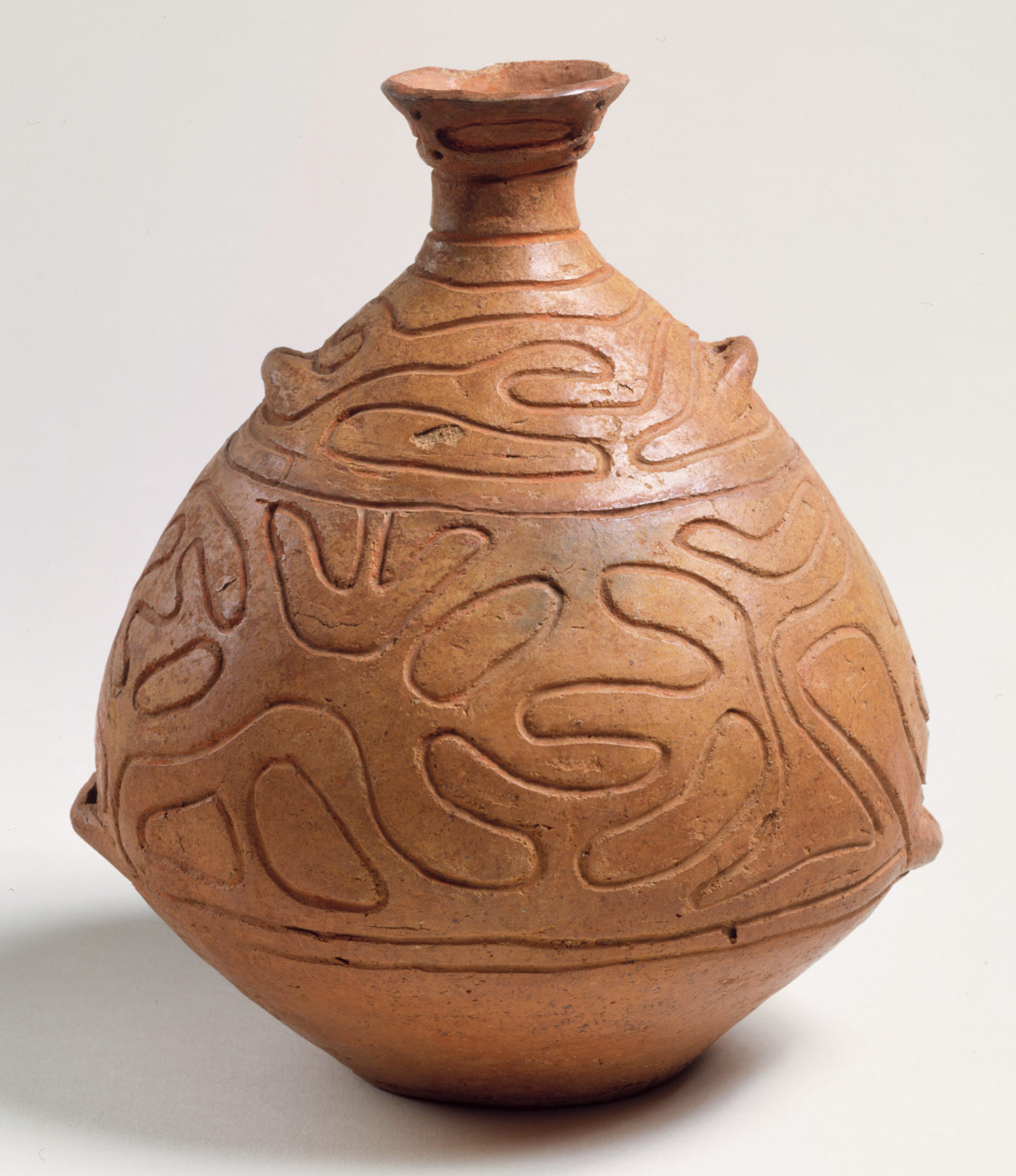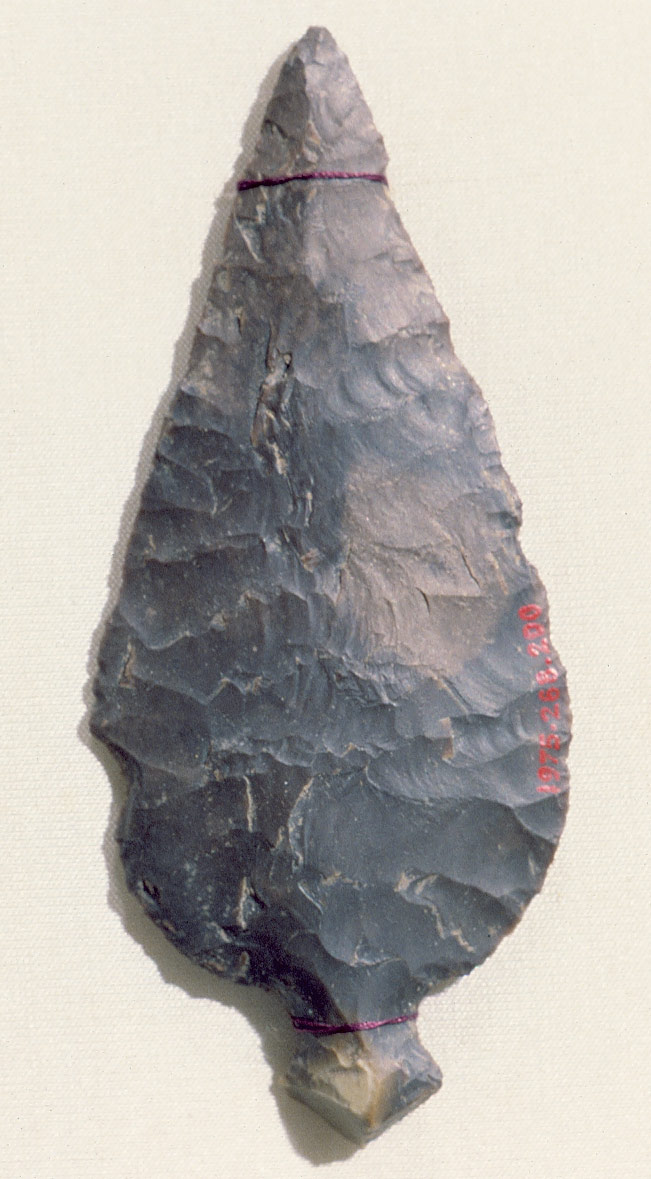The people of this period live primarily in the foothills and along the coast. As indicated by huge shell mounds and the appearance of new fishing devices, the sea provides the primary source of food. Late Jōmon cord-marked pottery, stone axes, and arrowheads show more similarity between regions than those made at other times of the Jōmon.
Japan, 2000–1000 B.C.
Timeline
2000 B.C.
1750 B.C.
1750 B.C.
1500 B.C.
1500 B.C.
1250 B.C.
1250 B.C.
1000 B.C.
Overview
Key Events
-
ca. 2000 B.C.
With intensive utilization—some scholars suggest incipient cultivation—of plants to augment ongoing hunting, fishing, and foraging efforts, the food supply and population increase, sparking the peak of the Jōmon culture. Pottery vessels are produced in large quantities in a wide variety of shapes to serve many functions. An early example of ceremonial burial, the practice of interring groups of deceased individuals in shell mounds, is established.
-
ca. 1500–1000 B.C.
As the population disperses during this period, cultural differences between regions decline, marking the earliest appearance of widespread cultural uniformity. For example, closely related contemporaneous pottery vessels decorated with cord-markings as well as polished stone axes have been found in various parts of Japan. This trend reverses toward the end of the Jōmon as the population declines and groups become increasingly isolated.
-
ca. 1500–300 B.C.
Clay figurines (dogū) in the shape of humans, usually female, and animals are produced, particularly in eastern Japan. The enlarged breasts and bellies of many female figures and the frequent presence of deliberate breaks suggest an association with fertility and shamanistic rites. The production of clay figurines seems to decrease significantly after the fourth century B.C.
Citation
“Japan, 2000–1000 B.C.” In Heilbrunn Timeline of Art History. New York: The Metropolitan Museum of Art, 2000–. http://www.metmuseum.org/toah/ht/?period=03®ion=eaj (October 2000)
